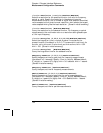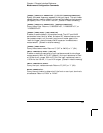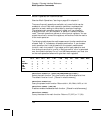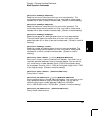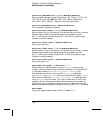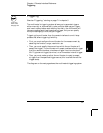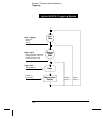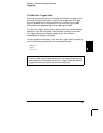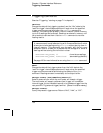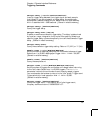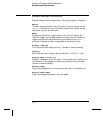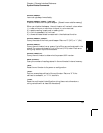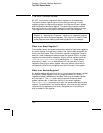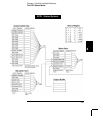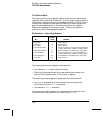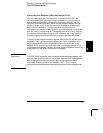
Triggering Commands
See also “Triggering,” starting on page 71 in chapter 3.
INITiate
Change the state of the triggering system from the “idle” state to the
“wait-for-trigger” state. Measurements will begin when the specified
trigger conditions are satisfied after the INITiate command is
received. The readings are placed in the multimeter’s internal memory
(up to 512 readings can be stored). Readings are stored in memory until
you are able to retrieve them. Use the FETCh? command to retrieve
reading results.
A new command is available starting with firmware Revision 2 which
allows you to take readings using INITiate without storing them in
internal memory. This command may be useful with the min-max
operation since it allows you to determine the average of a series of
readings without storing the individual values.
DATA:FEED RDG_STORE, "" do not store readings
DATA:FEED RDG_STORE, "CALCulate" store readings (default)
See page 126 for more information on using the DATA:FEED command.
READ?
Change the state of the trigger system from the “idle” state to the
“wait-for-trigger” state. Measurements will begin when the specified
trigger conditions are satisfied following the receipt of the READ?
command. Readings are sent immediately to the output buffer.
TRIGger:SOURce {BUS|IMMediate|EXTernal}
Select the source from which the multimeter will accept a trigger.
The multimeter will accept a software (bus) trigger, an immediate
internal trigger (this is the default source), or a hardware trigger from the
rear-panel Ext Trig (external trigger) terminal. [Stored in volatile memory]
TRIGger:SOURce?
Query the present trigger source. Returns “
BUS”, “IMM”, or “EXT”.
Chapter 4 Remote Interface Reference
Triggering Commands
130



